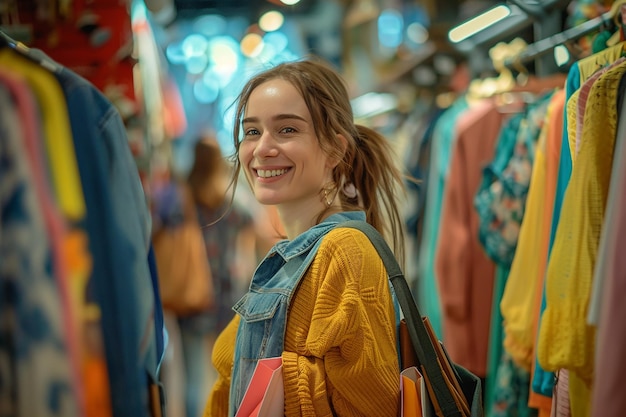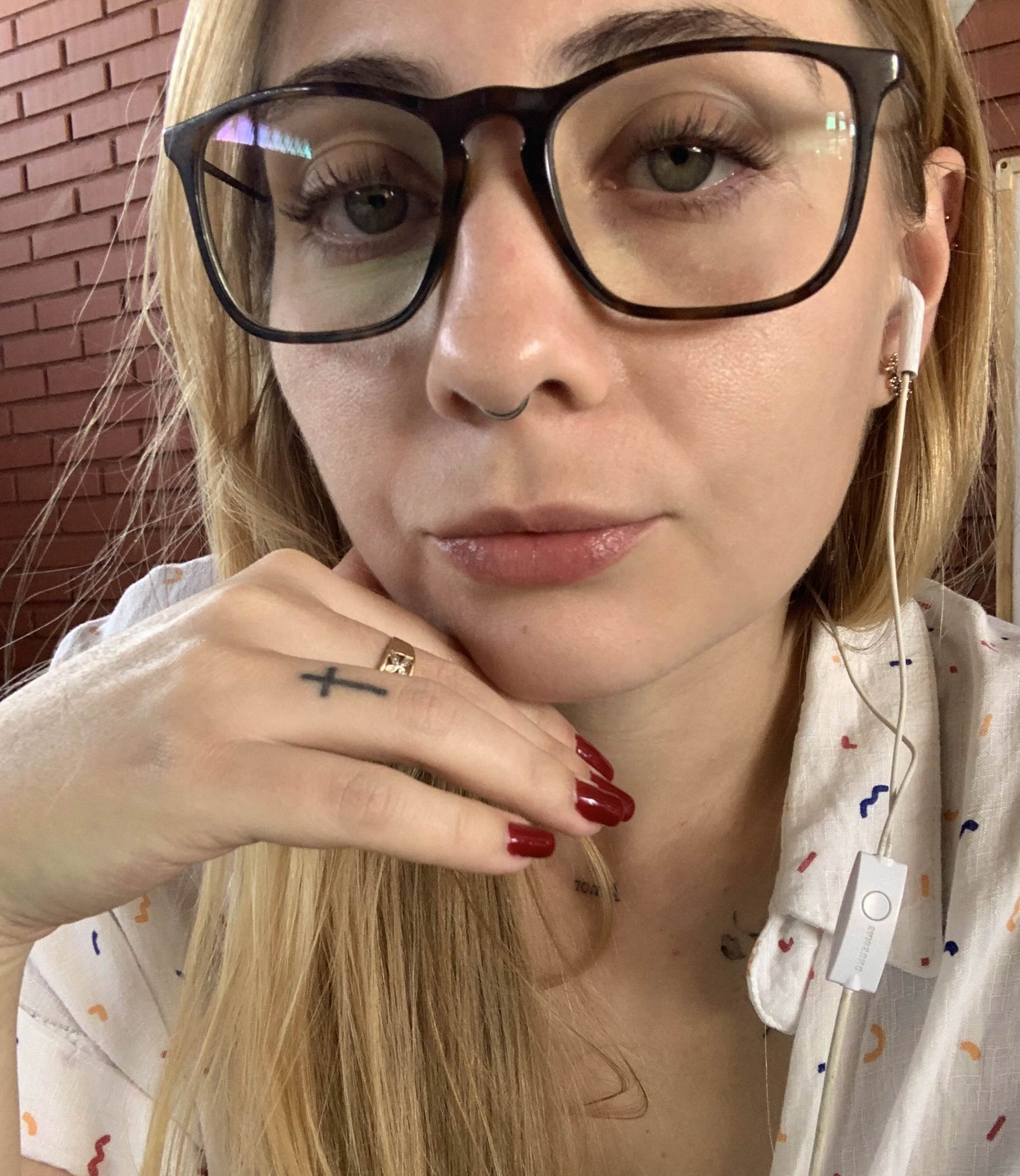Sustainable Fashion on a Budget: 7 Ways to Update Your Wardrobe

Sustainable fashion on a budget is achievable by repurposing old clothing, shopping at thrift stores, swapping clothes with friends, renting outfits for special occasions, choosing versatile pieces, opting for DIY projects, and investing in quality, durable items.
Want to embrace sustainable fashion on a budget: 7 ways to update your wardrobe for less than $100? It’s totally possible to look good and feel good about your choices without breaking the bank. Let’s dive in!
Why Sustainable Fashion Matters
Sustainable fashion is more than just a trend; it’s a movement focused on minimizing the environmental and social impact of the clothing industry. From reducing textile waste to ensuring fair labor practices, it’s about making conscious choices that benefit both people and the planet.
The Environmental Impact of Fast Fashion
Fast fashion, with its rapid production cycles and cheap materials, contributes significantly to pollution. Textile waste fills landfills, and the production processes often involve harmful chemicals and excessive water usage. Understanding these issues is the first step toward making a difference.
Social Responsibility in Fashion
Beyond environmental concerns, sustainable fashion also addresses social issues like fair wages and safe working conditions for garment workers. By supporting brands that prioritize ethical practices, consumers can help create a more just and equitable fashion industry.

- Reduces Waste: Sustainable practices aim to minimize textile waste through recycling and upcycling.
- Conserves Resources: It promotes the use of eco-friendly materials and reduces water and energy consumption.
- Ensures Fair Labor: Brands committed to sustainability prioritize fair wages and safe working conditions.
- Promotes Durability: Sustainable fashion focuses on creating long-lasting, high-quality garments.
By embracing sustainable fashion, you not only reduce your environmental footprint but also support a more ethical and responsible industry. It’s a win-win for everyone involved.
Repurpose Your Old Clothes
One of the easiest and most affordable ways to practice sustainable fashion is by repurposing old clothes. Instead of discarding items, get creative and transform them into something new. This can save you money and reduce waste.
DIY Fashion Projects
Transforming old clothes into new items can be a fun and rewarding experience. With a little creativity and some basic sewing skills, you can give your wardrobe a fresh update without spending a dime.
Simple Alterations and Upgrades
Sometimes, a simple alteration is all it takes to breathe new life into an old garment. Consider hemming a dress, adding new buttons, or changing the neckline of a shirt. These small changes can make a big difference.

- Turn Jeans into Shorts: Cut off the legs of old jeans to create a stylish pair of shorts.
- Transform T-shirts into Tank Tops: Cut off the sleeves and neckline of a T-shirt to create a cool tank top.
- Make a Scarf from Fabric Scraps: Sew together fabric scraps to create a unique and colorful scarf.
- Create a Tote Bag from an Old Shirt: Sew up the bottom of an old shirt and add handles to create a reusable tote bag.
Repurposing old clothes is a fantastic way to reduce waste and express your creativity. It’s a budget-friendly approach to sustainable fashion that anyone can try.
Thrift Store Treasures
Thrift stores are goldmines for unique and affordable clothing. Shopping second-hand is a great way to find high-quality pieces at a fraction of the original price, while also supporting sustainable practices.
Finding Hidden Gems
To make the most of thrift store shopping, patience is key. Take your time to browse through the racks and don’t be afraid to look beyond the surface. You might be surprised at the hidden gems you can find.
What to Look For
When thrift shopping, pay attention to the quality of the fabric, the condition of the seams, and the overall fit. Look for classic pieces that can be easily incorporated into your existing wardrobe.
- Quality Fabrics: Look for items made from durable materials like cotton, wool, and linen.
- Classic Styles: Choose timeless silhouettes that can be styled in multiple ways.
- Unique Finds: Keep an eye out for vintage pieces and one-of-a-kind items that add character to your wardrobe.
- Good Condition: Check for stains, tears, and other signs of wear and tear before making a purchase.
Thrift stores offer a wide variety of clothing at unbeatable prices. With a little patience and a keen eye, you can build a stylish and sustainable wardrobe without breaking the bank.
Clothes Swapping with Friends
Organizing a clothing swap with friends is a fun and eco-friendly way to refresh your wardrobe without spending any money. It’s a great opportunity to get rid of clothes you no longer wear and find new treasures in return.
How to Organize a Successful Swap
To ensure a successful clothing swap, set clear guidelines and invite friends with similar styles and sizes. Provide a comfortable space for trying on clothes and make it a social event with snacks and drinks.
Benefits of Clothes Swapping
Clothes swapping offers numerous benefits, including saving money, reducing waste, and discovering new styles. It’s also a great way to connect with friends and promote sustainable practices.
- Cost-Effective: It’s a free way to update your wardrobe with new items.
- Sustainable: It reduces textile waste by giving clothes a new life.
- Social: It’s a fun way to spend time with friends and share fashion tips.
- Variety: It allows you to experiment with different styles without committing to a purchase.
Clothes swapping is a fantastic way to refresh your wardrobe while promoting sustainability and community. It’s a win-win for everyone involved.
Rent Outfits for Special Occasions
Instead of buying new clothes for special occasions, consider renting an outfit. Rental services offer a wide variety of designer dresses, suits, and accessories at a fraction of the retail price. This is a sustainable and budget-friendly alternative to traditional shopping.
The Benefits of Renting
Renting outfits offers numerous benefits, including saving money, reducing closet clutter, and accessing high-end fashion. It’s also a more sustainable option than buying new clothes for one-time use.
Choosing the Right Rental Service
When selecting a rental service, consider factors such as the selection of clothing, the rental period, the cleaning process, and the return policy. Read reviews and compare prices to find the best option for your needs.
- Cost Savings: Renting is significantly cheaper than buying new clothes.
- Variety: Access a wide range of styles and designers.
- Convenience: Rental services handle cleaning and maintenance.
- Sustainability: Reduce waste by reusing garments.
Renting outfits is a smart and sustainable way to dress up for special occasions without breaking the bank. It’s a great option for anyone looking to reduce their environmental impact and save money.
Versatile Wardrobe Essentials
Investing in versatile wardrobe essentials that can be mixed and matched is a key strategy for sustainable fashion on a budget. These timeless pieces can be styled in countless ways, reducing the need for frequent purchases.
Building a Capsule Wardrobe
A capsule wardrobe consists of a limited number of essential items that can be easily combined to create a variety of outfits. By focusing on quality over quantity, you can build a stylish and sustainable wardrobe that lasts.
Key Pieces to Invest In
Some essential pieces to consider for your capsule wardrobe include a classic white shirt, a well-fitting pair of jeans, a little black dress, a tailored blazer, and a neutral-colored sweater. Choose high-quality versions of these items that will stand the test of time.
- White Shirt: A versatile staple that can be dressed up or down.
- Well-Fitting Jeans: A comfortable and stylish option for everyday wear.
- Little Black Dress: A timeless classic for special occasions.
- Tailored Blazer: A sophisticated piece that adds polish to any outfit.
By investing in versatile wardrobe essentials, you can create a stylish and sustainable wardrobe that meets your needs without exceeding your budget. These key pieces will serve as the foundation for countless outfits.
DIY Fashion and Accessories
Creating your own fashion and accessories is a fun and affordable way to express your personal style while promoting sustainability. With a little creativity and some basic crafting skills, you can transform simple materials into unique and stylish pieces.
Making Your Own Jewelry
Making your own jewelry is a great way to add a personal touch to your outfits. You can use a variety of materials, such as beads, wire, and recycled materials, to create unique necklaces, bracelets, and earrings.
Creating Custom Accessories
From headbands to belts to scarves, there are countless ways to create custom accessories that reflect your personal style. Experiment with different fabrics, colors, and embellishments to create one-of-a-kind pieces.
- Beaded Necklaces: Use colorful beads to create a statement necklace.
- Wire Bracelets: Craft simple and elegant bracelets using wire and charms.
- Fabric Headbands: Sew together fabric scraps to create stylish headbands.
- Upcycled Belts: Transform old belts with new buckles and embellishments.
DIY fashion and accessories offer endless possibilities for creativity and self-expression. It’s a budget-friendly and sustainable way to add unique touches to your wardrobe.
Invest in Quality, Durable Items
While it may be tempting to buy cheap, trendy items, investing in quality, durable pieces is a more sustainable and cost-effective approach in the long run. These garments will last longer, reducing the need for frequent replacements.
Choosing Quality Fabrics
When shopping for clothes, pay attention to the quality of the fabric. Natural fibers like cotton, linen, and wool are generally more durable and sustainable than synthetic materials like polyester and nylon.
Caring for Your Clothes
Proper care is essential for prolonging the life of your clothes. Follow the care instructions on the garment label, wash your clothes in cold water, and avoid using harsh detergents. Hang or fold your clothes properly to prevent wrinkles and damage.
- Read Care Labels: Follow the instructions for washing and drying.
- Wash in Cold Water: Cold water is gentler on fabrics and saves energy.
- Avoid Harsh Detergents: Use mild, eco-friendly detergents.
- Proper Storage: Hang or fold clothes to prevent wrinkles and damage.
Investing in quality, durable items and caring for your clothes properly will not only save you money in the long run but also reduce your environmental impact. It’s a smart and sustainable approach to fashion.
| Key Point | Brief Description |
|---|---|
| ♻️ Repurpose Old Clothes | Transform old items into new ones to reduce waste. |
| 🛍️ Shop Thrift Stores | Find unique and affordable clothing second-hand. |
| 👚 Clothes Swapping | Exchange clothes with friends to refresh your wardrobe. |
| 💎 Quality Investments | Opt for durable, lasting items to decrease frequent buys. |
Frequently Asked Questions (FAQ)
▼
Sustainable fashion refers to clothing and accessories that are produced in an environmentally and socially responsible manner, minimizing harm to the planet and ensuring fair labor practices.
▼
Start by repurposing old clothes, shopping at thrift stores, and swapping clothes with friends. Also, invest in versatile essentials that can be mixed and matched for various outfits.
▼
Yes, thrift store clothes are generally safe. However, it’s always a good idea to wash them thoroughly before wearing to ensure they are clean and hygienic.
▼
Versatile essentials include a white shirt, a well-fitting pair of jeans, a little black dress, a blazer, and a neutral-colored sweater. These items can be styled in numerous ways.
▼
Investing in quality items ensures they last longer, reducing the need for frequent replacements. This approach is more sustainable and cost-effective in the long run, benefiting both you and the environment.
Conclusion
Embracing sustainable fashion on a budget is not only possible but also a rewarding journey. By repurposing, thrifting, swapping, renting, and investing in quality pieces, you can create a stylish and eco-friendly wardrobe without breaking the bank. These simple steps can make a big difference in reducing waste and promoting a more sustainable future for fashion.
